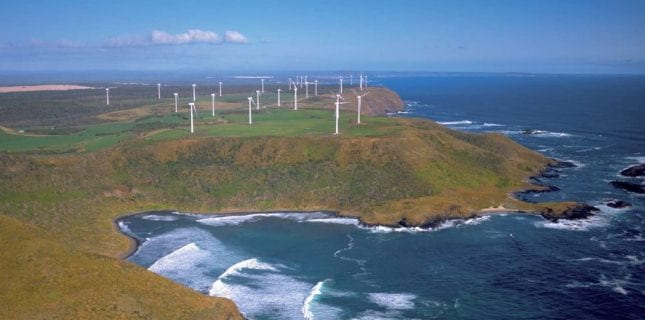
A 112MW Tasmanian wind farm that will deliver a one-third increase to the state’s wind power capacity has reached financial close, after an investment from the Clean Energy Finance Corporation.
The CEFC said on Thursday that it had committed $59 million to the $280 million Granville Harbour wind farm, being developed by Palisade Investment Partners on a cattle farm on Tasmania’s west coast.
The project was initially developed by Westcoast Wind, which was bought out by Palisade in February 2018, some months after the two companies negotiated a long-term PPA for the wind farm’s output with Hydro Tasmania.
In January, when construction on the wind farm began, Hydro Tasmania said that Granville Harbour would contribute to its plans to double the Apple Isle’s renewable energy capacity and make it the Battery of the Nation.
The Acting CEO of Hydro Tasmania, Gerard Flack, said the business would buy about 360 gigawatt-hours of energy and renewable energy certificates a year from the wind farm.
Palisade – which is also behind the Hallett and Waterloo wind farms in South Australia, and the 148MW Ross River Solar Farm in Queensland – said Granville would be funded through equity from its own renewable energy fund (PERF) and from the CEFC.
It will also take the company’s PREF portfolio half way to its 1GW target, with the energy generated from the portfolio enough to power over 200,000 homes and abate 645,000 tonnes of CO2 per year.
“Granville Harbour Wind Farm demonstrates Palisade’s hands-on approach to renewables investment and further diversifies our renewable energy portfolio,” said managing director and CEO Roger LLoyd.
“Palisade’s involvement through the development phase to financial close enables us to maximise risk-adjusted returns for our investors.”
For the CEFC, which alongside Suncorp is an institutional investor in Palisade’s PERF portfolio, the Granville commitment marks its largest investment in Tasmania, and first in a Tasmanian wind project.
“Tasmania has a great track record in renewable energy through its investment in hydro resources,” said CEFC CEO Ian Learmonth on Thursday.
“We’re excited to be involved in a project that will further diversify the Tasmania’s clean energy to include more wind, while helping Tasmania achieve its target of 100 per cent renewable energy by 2022.”
CEFC wind sector lead Andrew Gardner said Granville Harbour was part of an increasing
focus by the green bank on greenfield wind energy projects in the island state, which will see “considerable investment” over coming years.
“This project will create regional employment opportunities both during and after construction. It will also deliver ongoing benefits through community investment funds and associated improvements in local infrastructure,” Gardner said.
“Nationally, we have now invested more than $760 million in 11 wind projects, delivering a combined capacity of more than 1.76GW of new clean energy.
“Wind remains the most cost effective new clean energy source, with projects like Granville Harbour Wind Farm benefiting from a strong wind resource and ongoing wind turbine technology improvements to better harness the resource.”
Elsewhere in Tasmania, the CEFC has invested more than $16.4 million in clean energy projects, including tailored finance for more than 140 smaller-scale projects via specialist co-financing programs with major banks.
These programs provide finance for a range of eligible renewable and energy efficiency projects, largely to small and medium-sized businesses.
For Granville Harbour, the project’s 31 3.6MW wind turbines will be supplied by Vestas, with commercial operations scheduled to commence in Q4, 2019.








